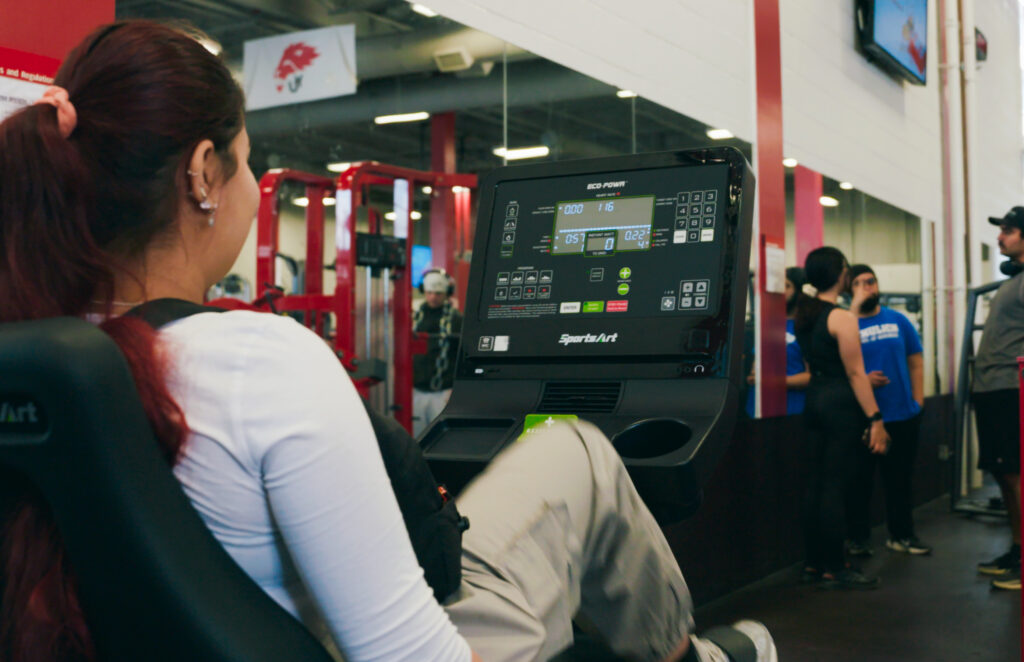
New electricity-generating workout machines introduced last year at York University’s Tait McKenzie Centre have demonstrated the University’s commitment to affordable and clean energy, one of the United Nations Sustainable Development Goals (SDGs), by reducing emissions and powering the institution’s grid.
In 2023, at the Tait McKenzie Centre’s 11,000-square-foot fitness centre, many of the exercise machines used by the York community were worn down and nearing the end of their lifespan. While considering how to replace the equipment, Athletics & Recreation (A&R) saw a unique opportunity.
They could replace the machines with new, comparable ones, or they could take an approach that would further one of the University’s most notable ongoing institutional goals – affordable and clean energy – with something more innovative: electricity-generating workout machines.

The decision was an easy one. While the green machines were comparable in price to traditional equipment, they offered a notable advantage: the value of using human power to reduce emissions on the Keele Campus. “This is one of the key driving forces that led us to purchase these state-of-the-art machines that can advance our mission towards sustainability, contributing back to the grid and keeping up with our fitness goals, one step at a time,” says Steven Chuang, executive director for A&R. “We wanted to ensure that we’re really striving towards the United Nations Sustainable Development Goals and educating students about the value of sustainability.”
Since August 2023, 42 electricity-generating machines – which include treadmills and indoor bicycles from green fitness company SportsArt – have been introduced to the Tait McKenzie Centre, helping York become one of the first universities in Canada to have green workout equipment at that scale.
The treadmills and bicycles have been plugged into outlets where no energy is drawn and are leveraging the energy generated by users to give back to the University’s power grid. Over the past months, the machines have been working toward the roughly 19,264 kilowatts of energy they can produce per year, which equals roughly 7,700 kettles of water.

They are expected to save $25,000 over the next five years, as energy produced from workouts follows the path of least resistance to where it’s needed on campus – whether it’s providing energy to power a clock or an LCD screen. Tait McKenzie, and the machines, even offer a feature where those breaking a sweat on the machines can directly see their contributions to sustainability through a leaderboard display screen that tracks which workout equipment units are producing the most power.
“Having these machines on campus is a model for what can be done for sustainability,” says Mike Layton, chief sustainability officer. “That’s what being part of a university is all about – contributing not only to making the university space better but making a better world.”
In the past few months, these machines have made an impact on several users, including staff members. “I smile when I’m on them,” says Art McDonald, acting associate director of campus recreation. “It feels good to use these machines and give back to the planet.”
For those interested in testing these machines, visit the Tait McKenzie Centre on weekdays from 7 a.m. to 9 p.m. and weekends from 9 a.m. to 6 p.m. Keep an eye out for the green SportsArt logo.
